Walking on water: Christo and Jeanne-Claude’s Floating Piers on Lake Iseo
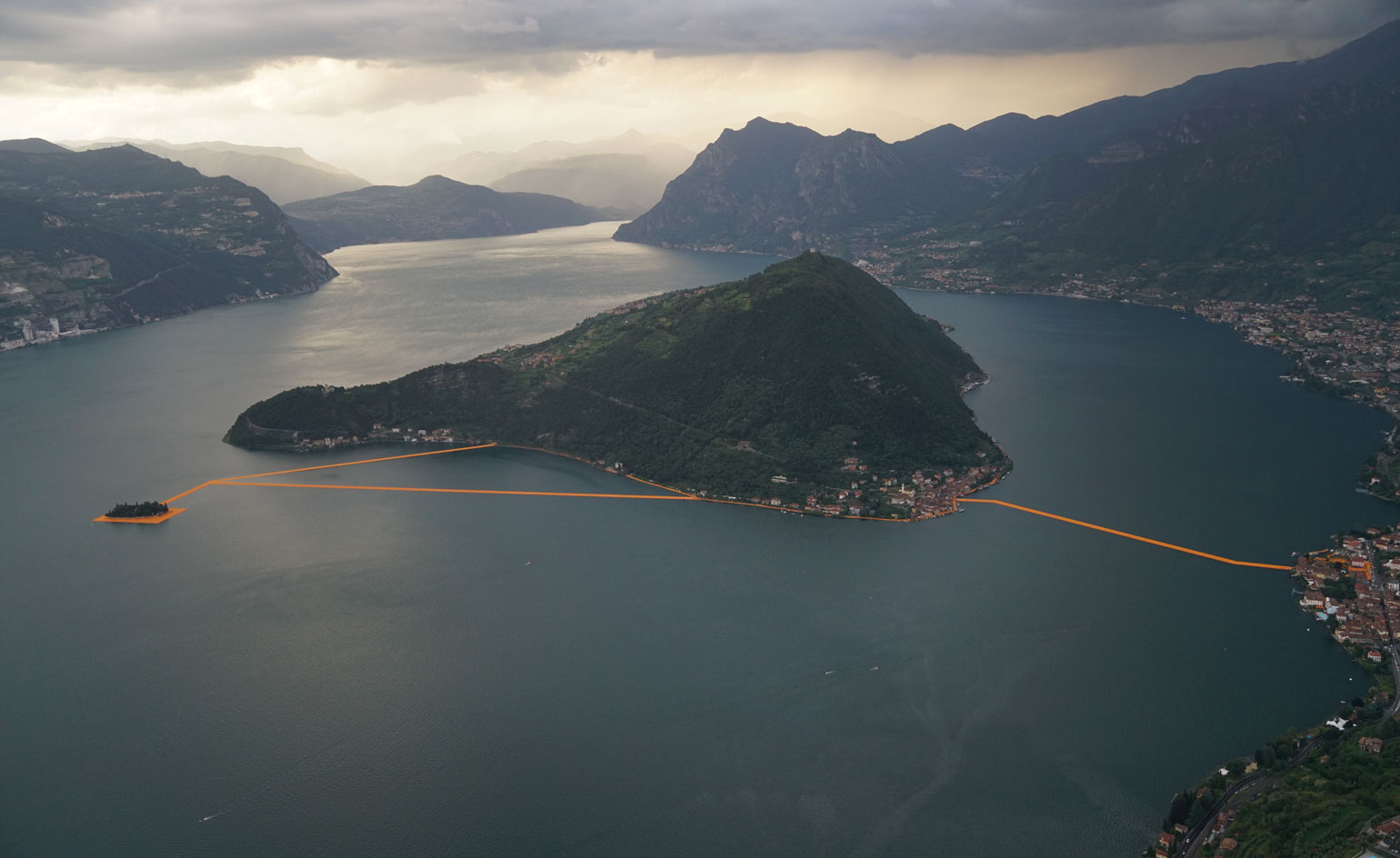
Northern Italy’s Lake Iseo just got even more idyllic. Amid the picturesque nature, artists Christo and Jeanne-Claude have laid down a new installation to take the meditative scene to the next level, facilitating some literal walking on water.
The Floating Piers is an immense three-kilometre walkway comprised of a whopping 100,000 sq m of yellow fabric. Keeping in tune with the lake’s flowing waterways, they have scattered the sunshine textile over 220,000 high-density polyethylene cubes to allow people to kiss the surface of the water with their steps on the route, which stretches from Sulzano to Monte Isola, and on to the island of San Paolo.
The pair are known for wrapping materials around many of Italy’s iconic locations, including the Medieval Tower in Spoleto in 1968. This more interactive project was originally conceived back in 1970, and it has been totally funded through Christo’s sales of original works.
The dynamic install has taken months to prepare via water and air with commercial divers from France anchoring the piece from depths of up to 90m below the surface, and the felts transported by helicopters from above.
The Floating Piers' immersive qualities transcend the interactive. While visitors are able to appreciate the serene ‘walking on water’ experience, the visual is just as powerful. Up in the mountains above, people can observe the scorching mustard-hued snake running through the azure waters, creating graphic lines and cutting the colours of the landscape: ‘The light and water will transform the bright yellow fabric to shades of red and gold throughout the 16 days,’ Christo explains.
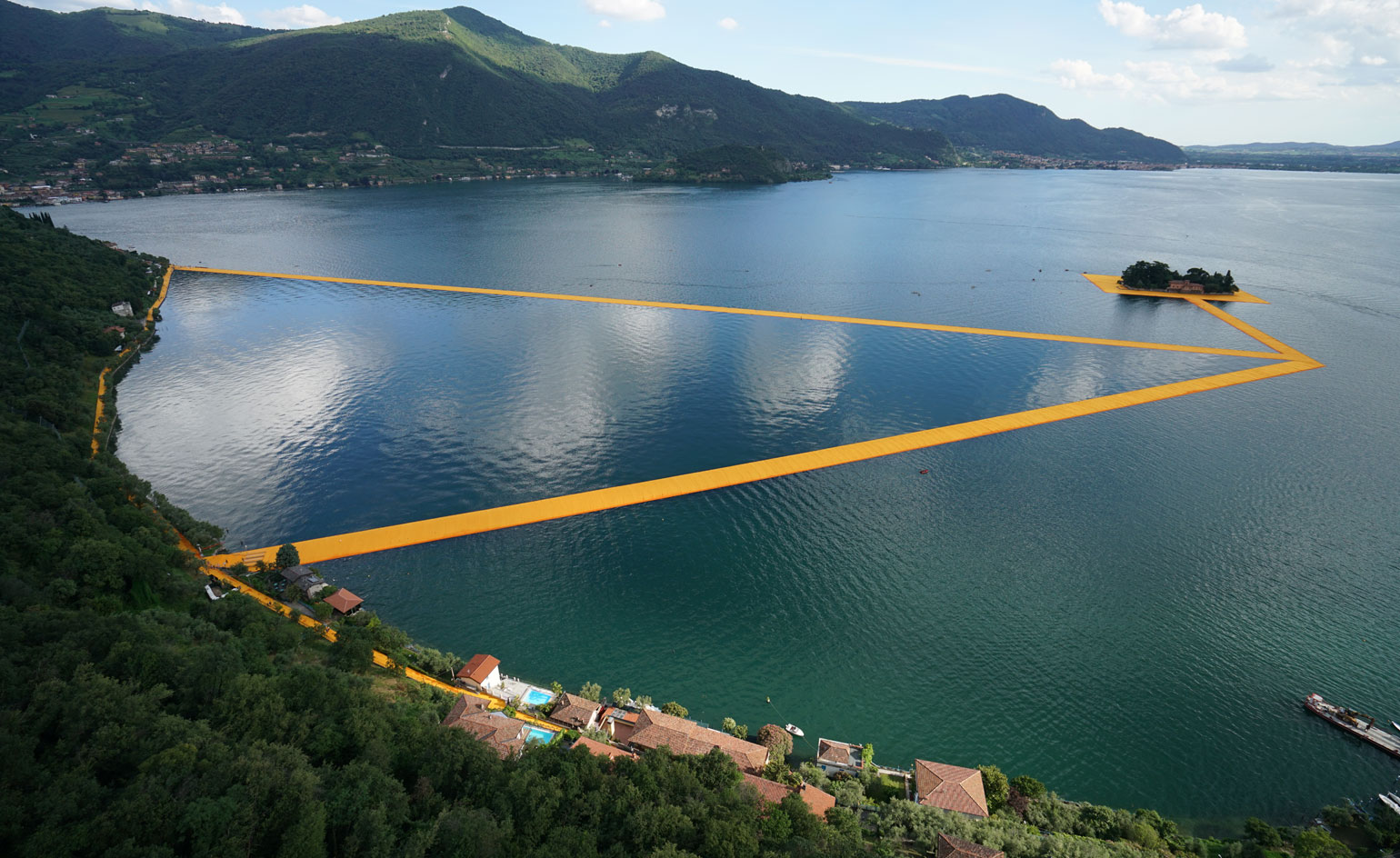
The artwork is an immense 3km walkway comprised of a whopping 100,000 sq m of yellow fabric
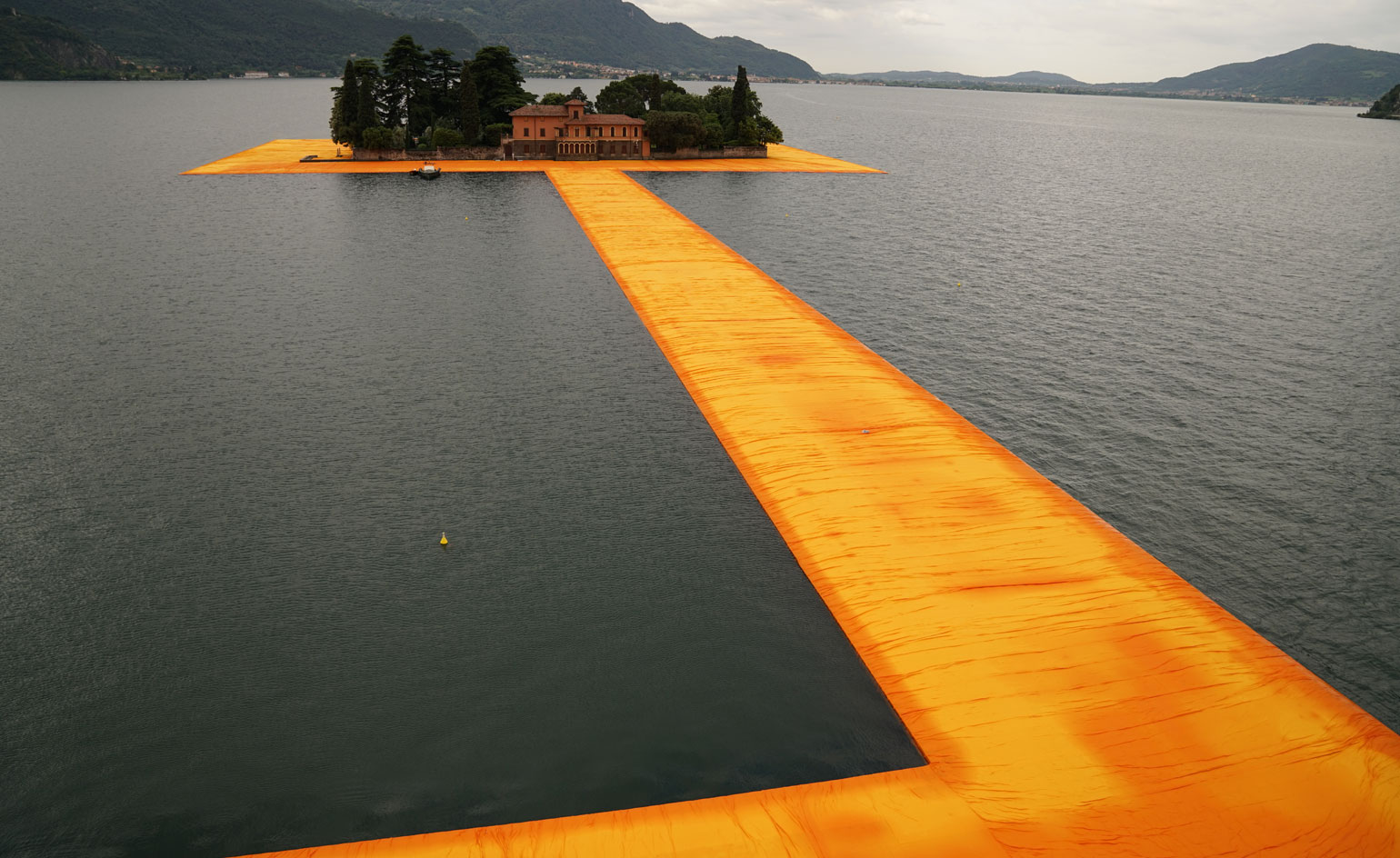
The pier stretches from Sulzano to Monte Isola, and on to the island of San Paolo
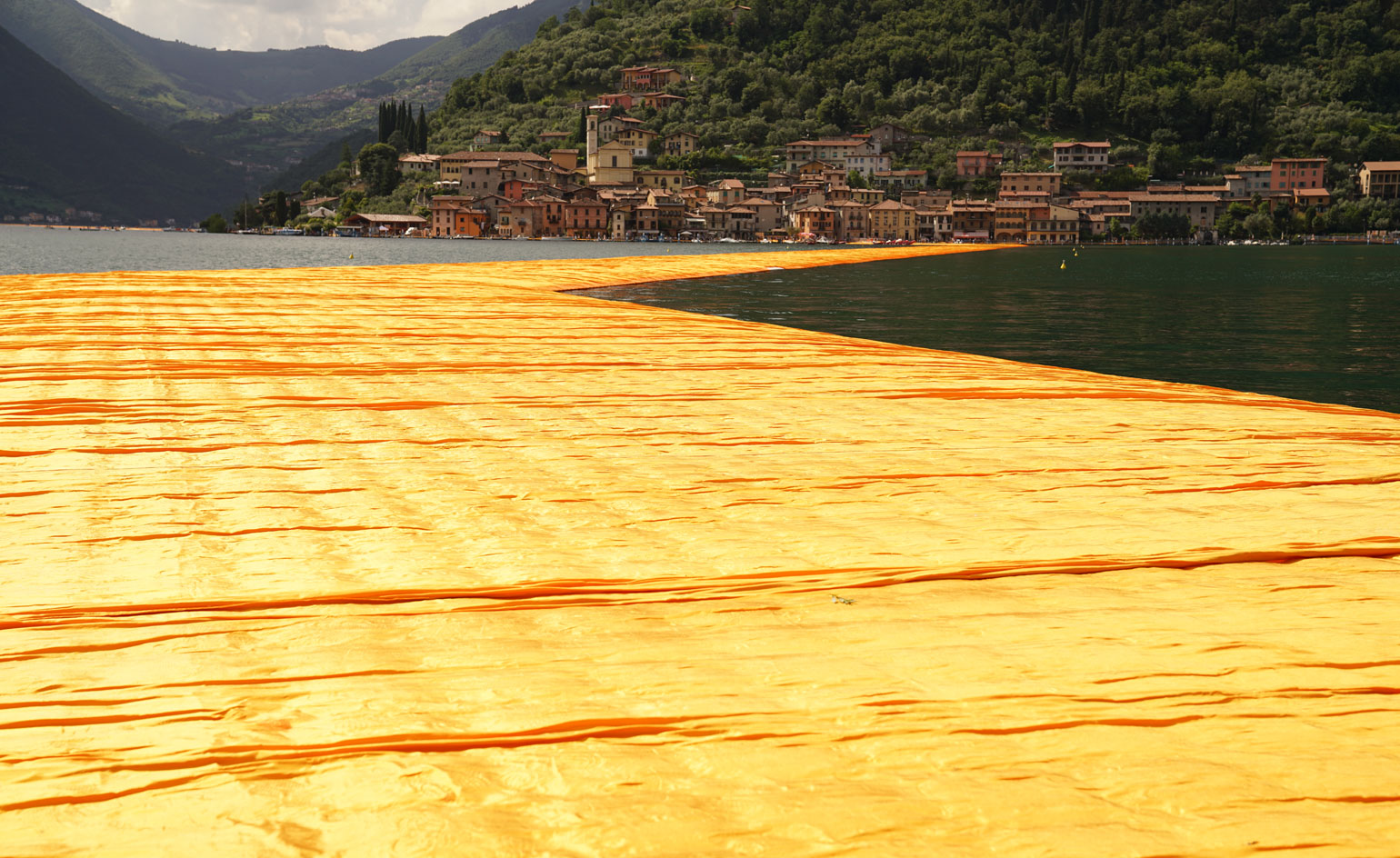
Keeping in tune with the lake’s flowing waterways, they have scattered the sunshine textile over 220,000 high-density polyethylene cubes to allow people to kiss the surface of the water with their steps
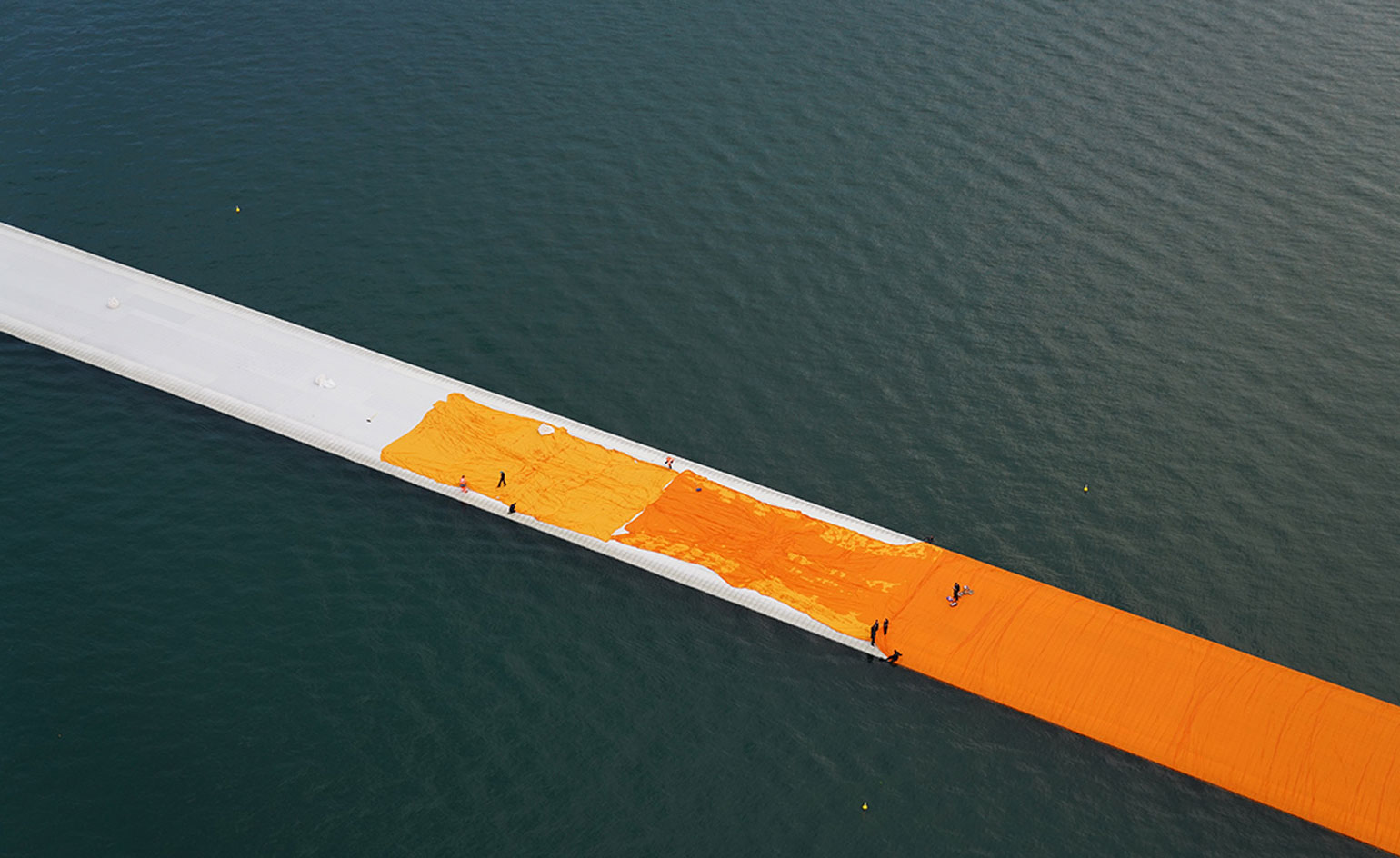
The dynamic install has taken months to prepare via water and air
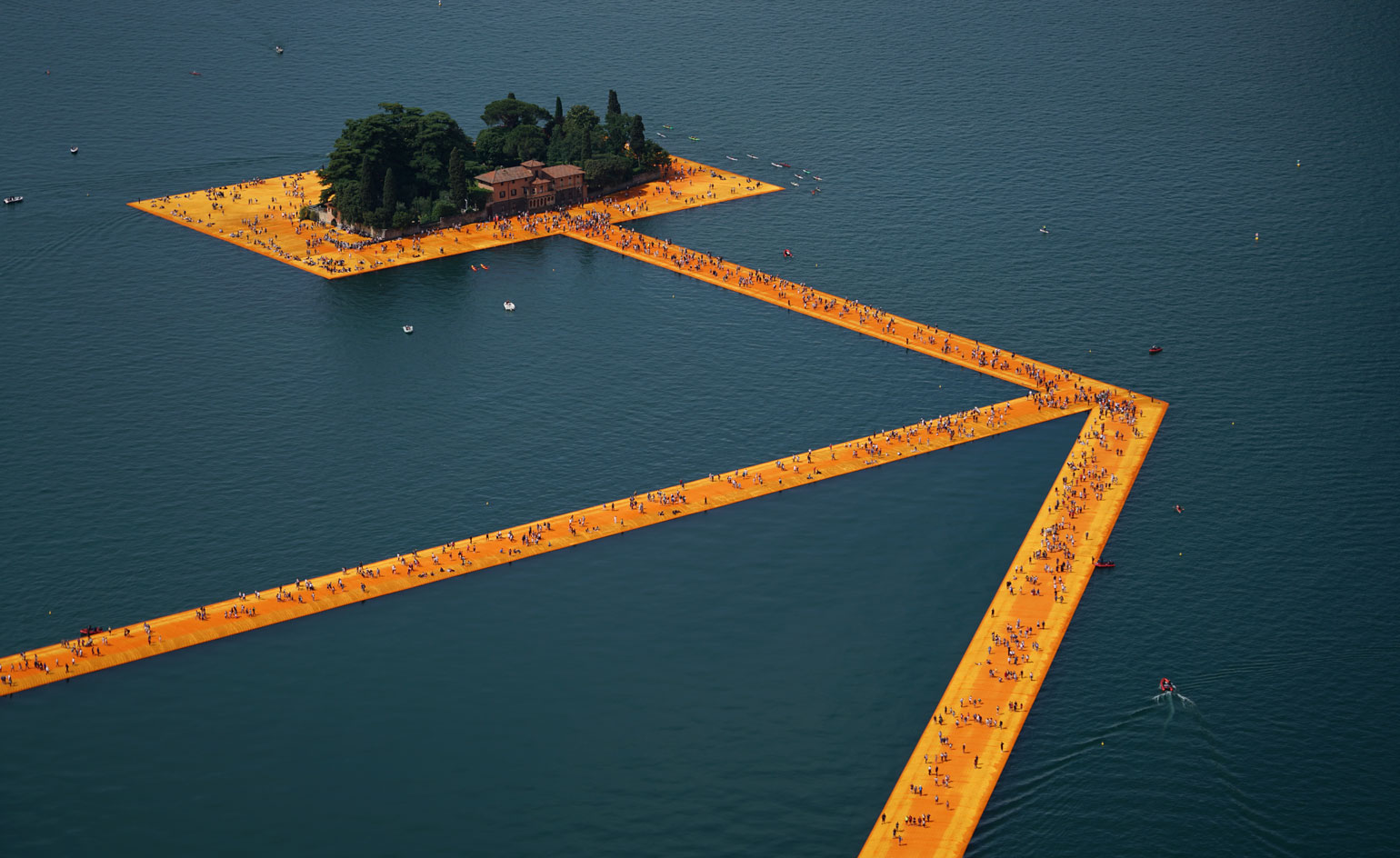
Commercial divers from France anchored the piece from depths of up to 90m below the surface
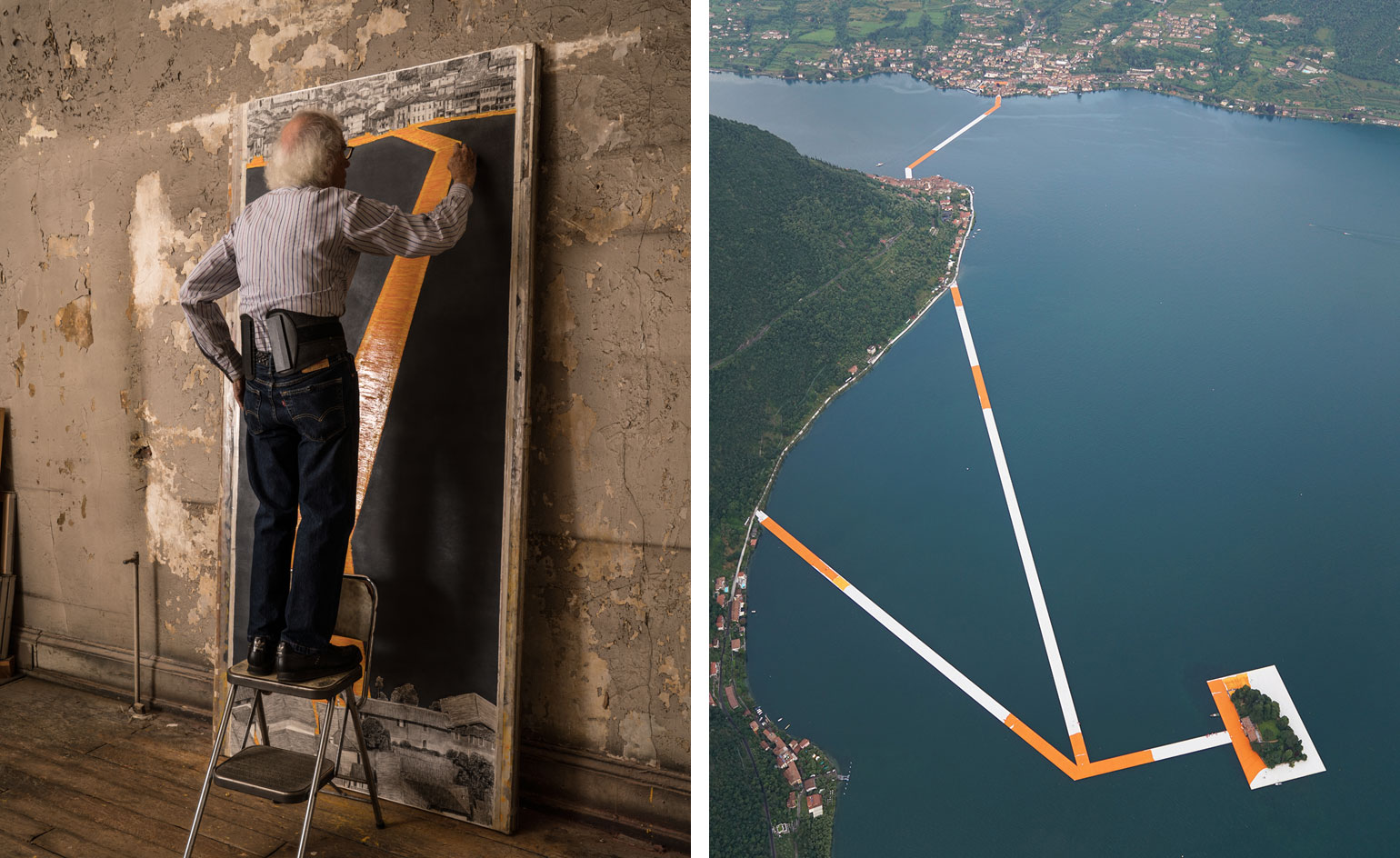
The project was originally conceived back in 1970, and it is totally funded through Christo’s sales of original works
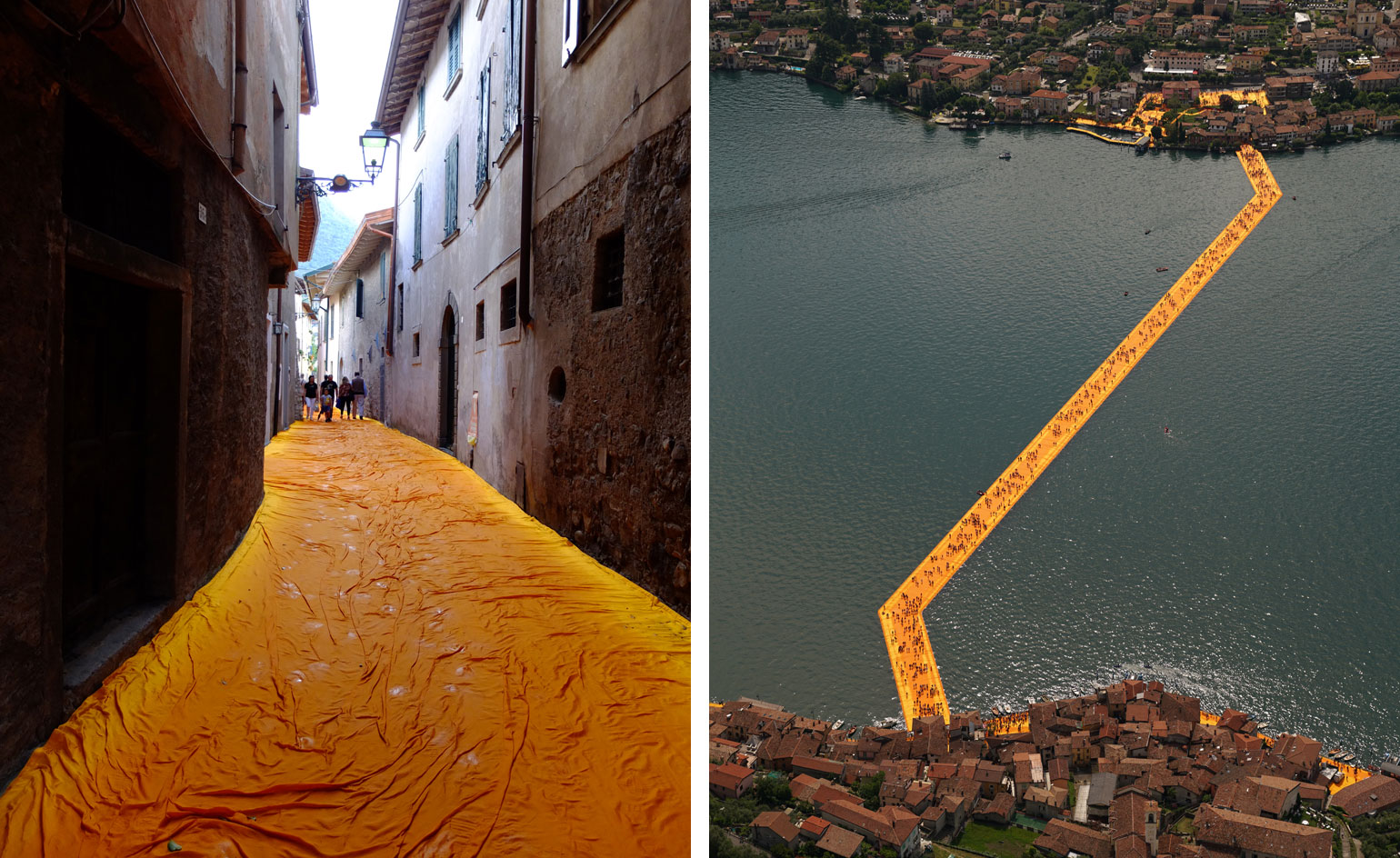
Up in the mountains above, people can observe the scorching mustard-hued snake running through the azure waters
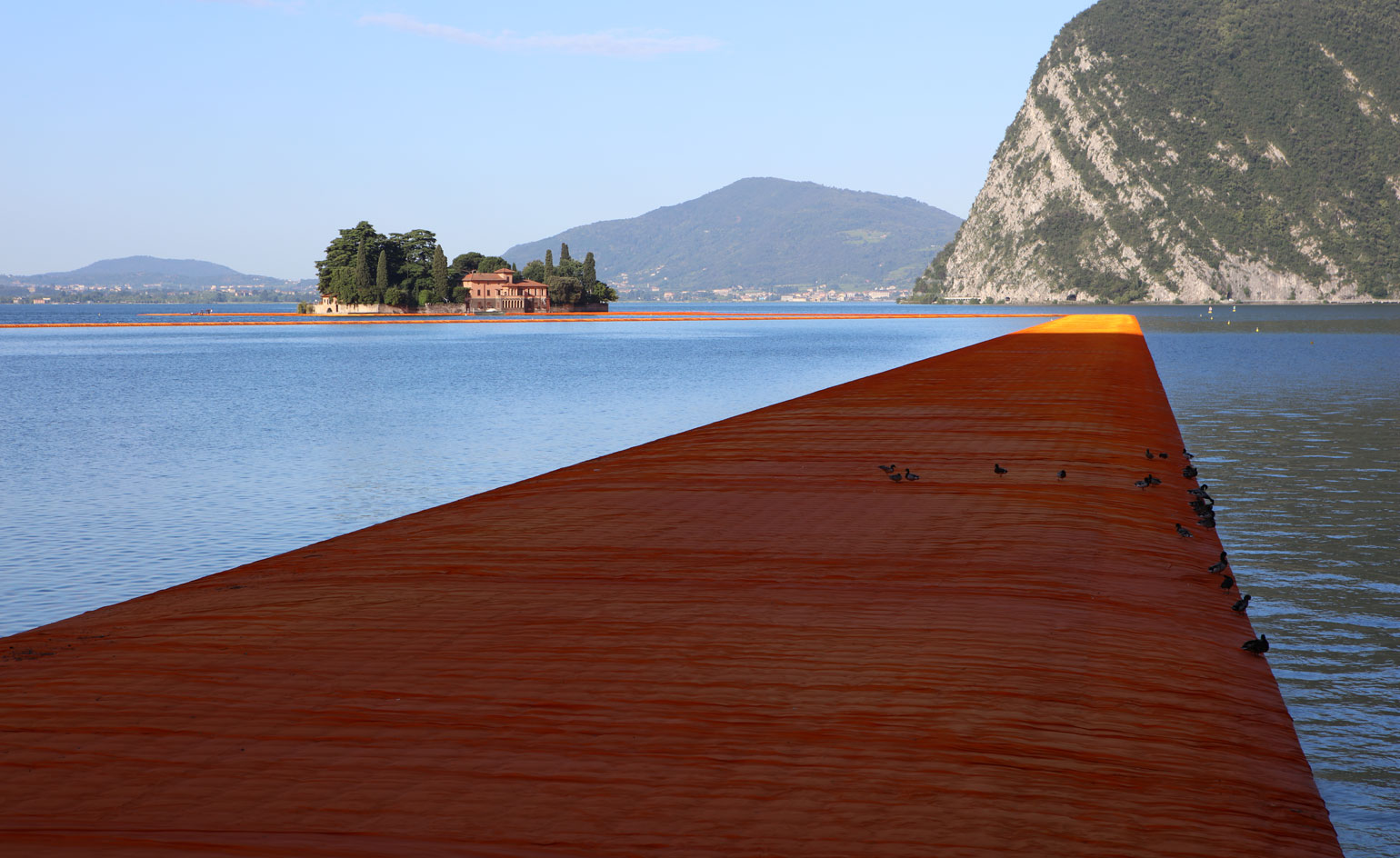
‘The light and water will transform the bright yellow fabric to shades of red and gold throughout the 16 days,’ Christo explains
INFORMATION
The Floating Piers is on view until 3 July. For more information, visit Christo and Jeanne-Claude’s website
Photography: Wolfgang Volz. Copyright Christo
Receive our daily digest of inspiration, escapism and design stories from around the world direct to your inbox.
Sujata Burman is a writer and editor based in London, specialising in design and culture. She was Digital Design Editor at Wallpaper* before moving to her current role of Head of Content at London Design Festival and London Design Biennale where she is expanding the content offering of the showcases. Over the past decade, Sujata has written for global design and culture publications, and has been a speaker, moderator and judge for institutions and brands including RIBA, D&AD, Design Museum and Design Miami/. In 2019, she co-authored her first book, An Opinionated Guide to London Architecture, published by Hoxton Mini Press, which was driven by her aim to make the fields of design and architecture accessible to wider audiences.
-
 Art and culture editor Hannah Silver's top ten interviews of 2025
Art and culture editor Hannah Silver's top ten interviews of 2025Glitching, coding and painting: 2025 has been a bumper year for art and culture. Here, Art and culture editor Hannah Silver selects her favourite moments
-
 In Norway, remoteness becomes the new luxury
In Norway, remoteness becomes the new luxuryAcross islands and fjords, a new wave of design-led hideaways is elevating remoteness into a refined, elemental form of luxury
-
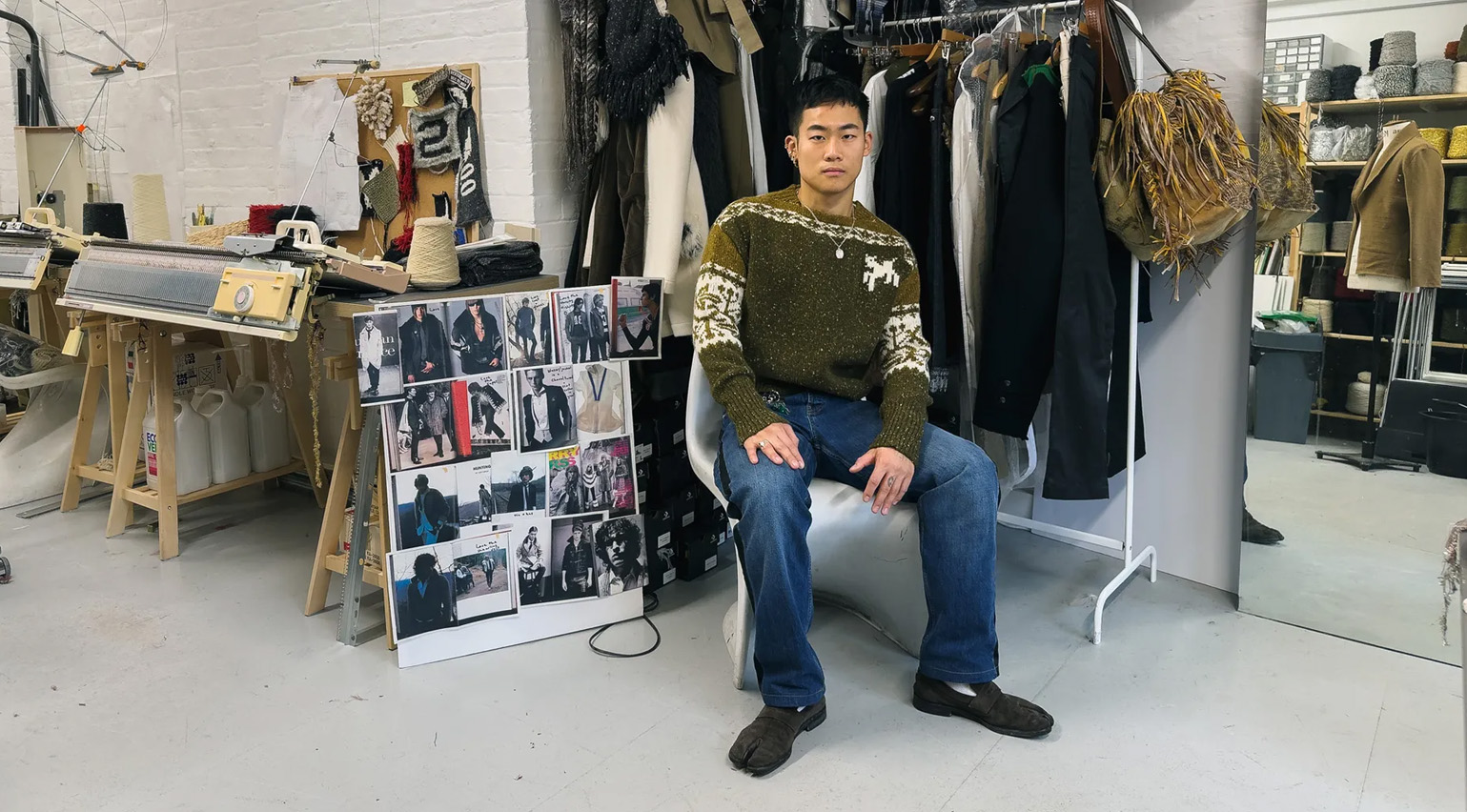 The rising style stars of 2026: Oscar Ouyang is taking knitwear into new realms
The rising style stars of 2026: Oscar Ouyang is taking knitwear into new realmsAs part of the January 2026 Next Generation issue of Wallpaper*, we meet fashion’s next generation. Born in Beijing, Central Saint Martins graduate Oscar Ouyang is inspired by anime, medieval folklore and his friends’ wardrobes
-
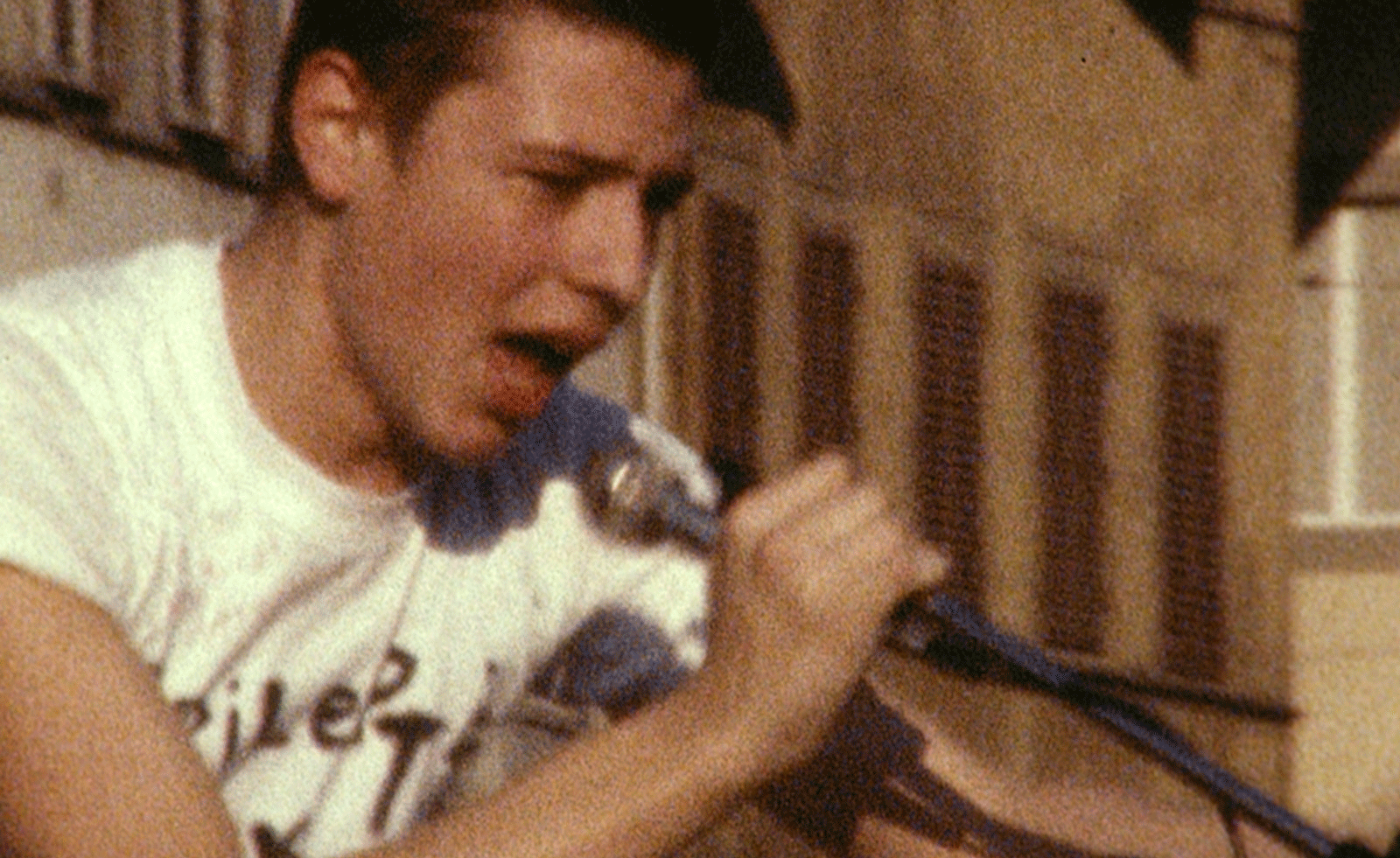 A forgotten history of Italian artists affected by the HIV-AIDS crisis goes on show in Tuscany
A forgotten history of Italian artists affected by the HIV-AIDS crisis goes on show in Tuscany‘Vivono: Art and Feelings, HIV-AIDS in Italy. 1982-1996’, at Centro per l'Arte Contemporanea Luigi Pecci in Prato delves into the conversation around the crisis
-
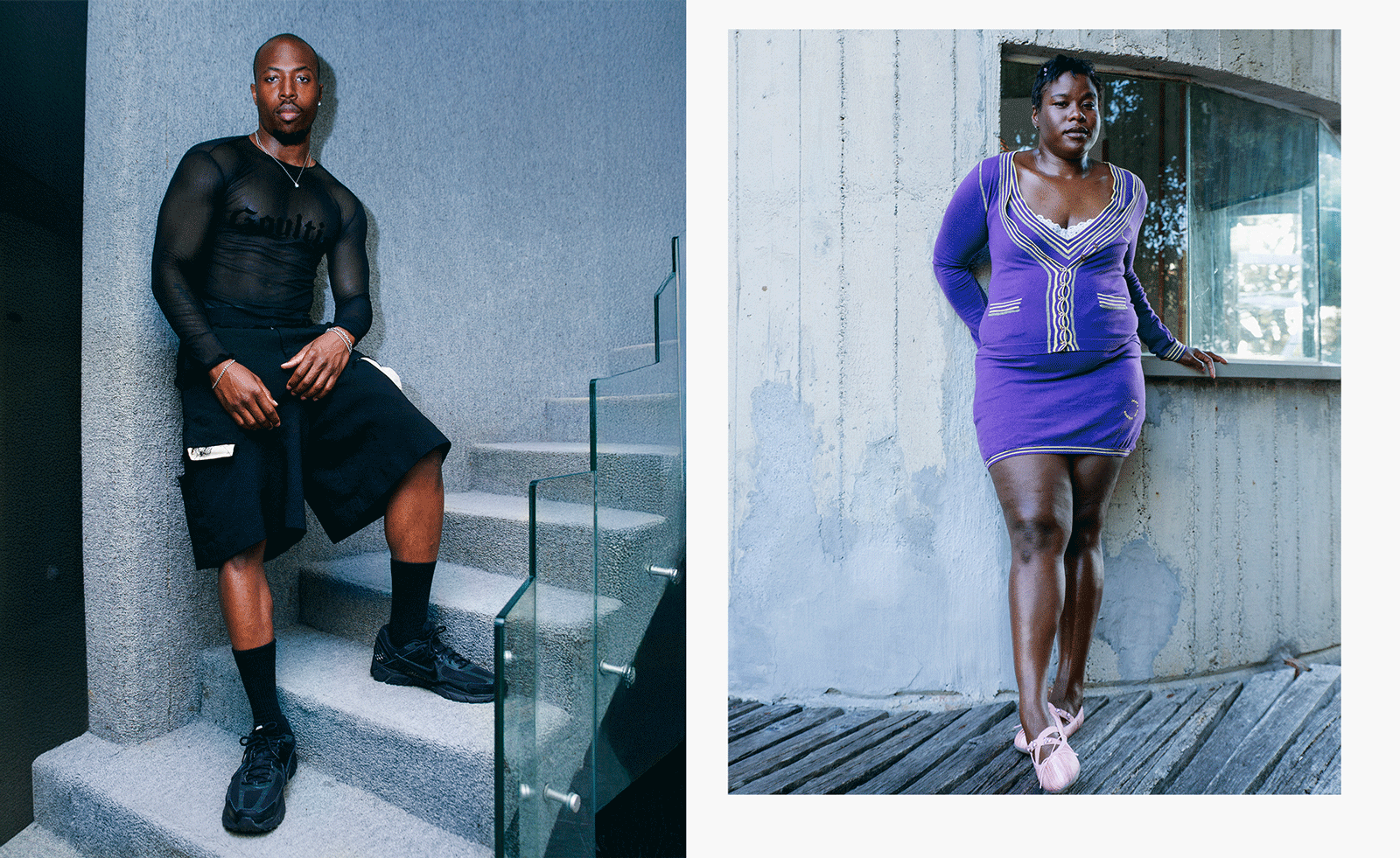 Creativity and rest reign at this Tuscan residence for Black queer artists
Creativity and rest reign at this Tuscan residence for Black queer artistsMQBMBQ residency founder Jordan Anderson sparks creativity at his annual Tuscan artist residency. Wallpaper* meets him to hear about this year's focus.
-
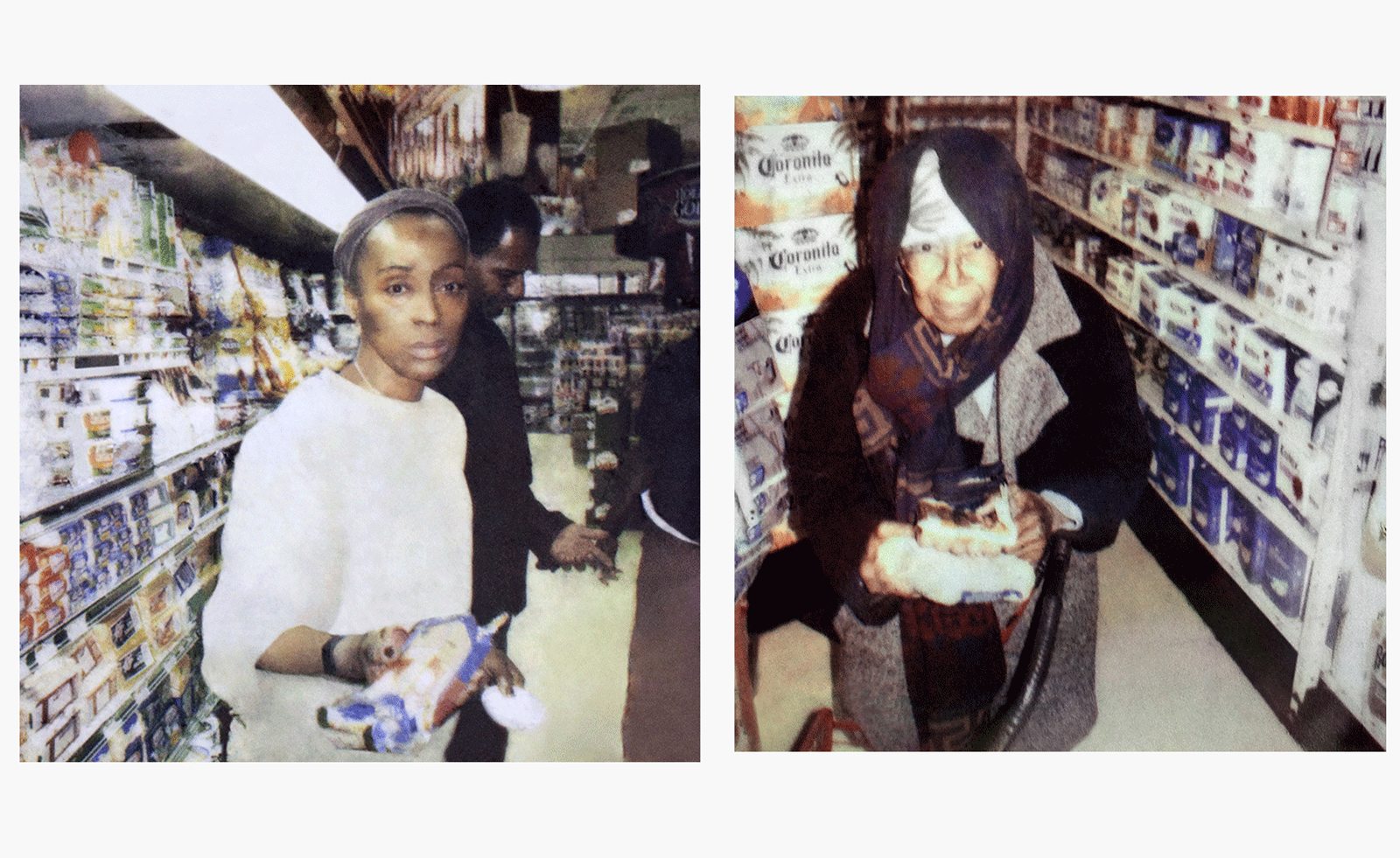 Photographer Mohamed Bourouissa reflects on society, community and the marginalised at MAST
Photographer Mohamed Bourouissa reflects on society, community and the marginalised at MASTMohamed Bourouissa unites his work from the last two decades at Bologna’s Fondazione MAST
-
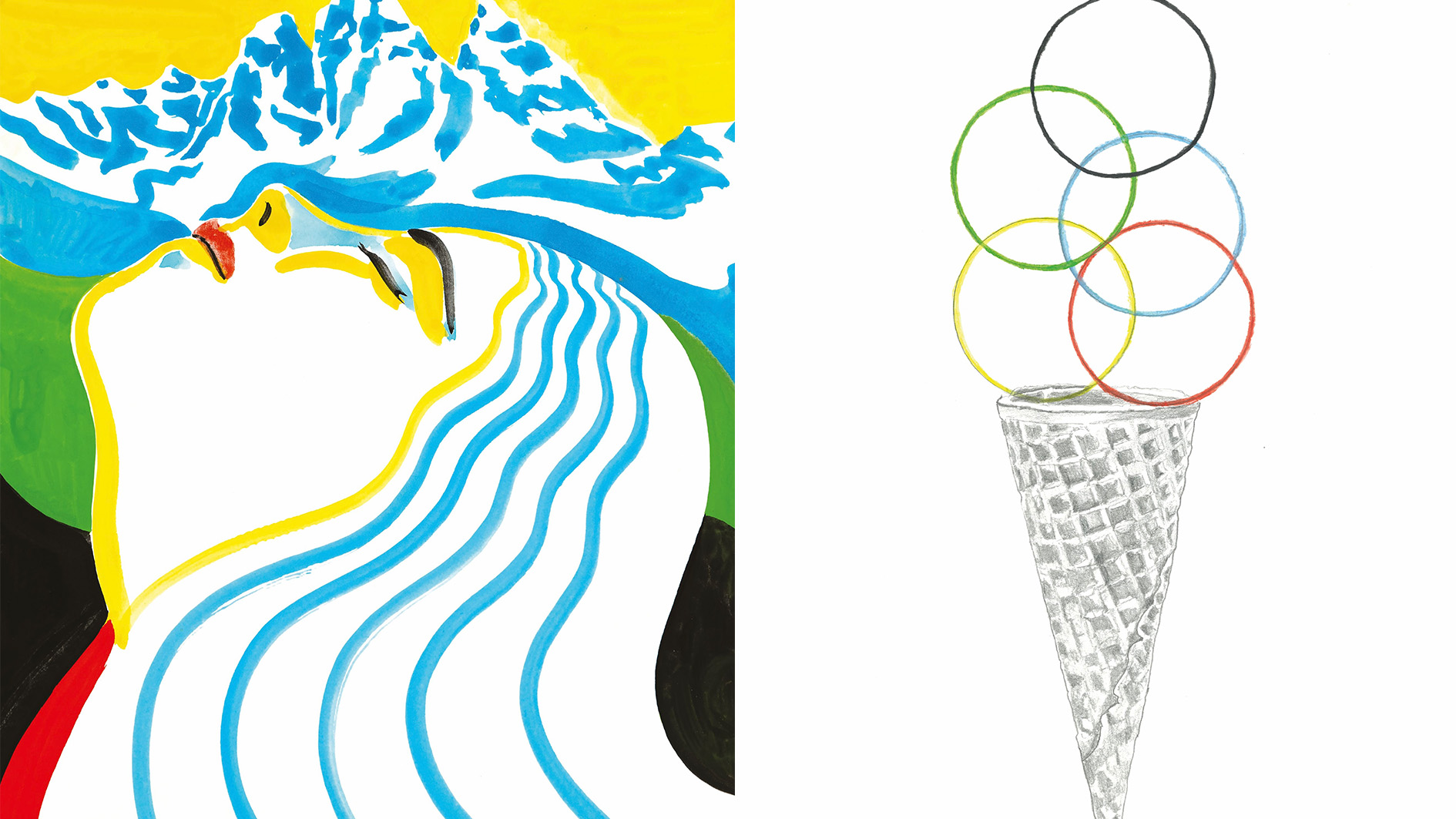 Ten super-cool posters for the Winter Olympics and Paralympics have just been unveiled
Ten super-cool posters for the Winter Olympics and Paralympics have just been unveiledThe Olympic committees asked ten young artists for their creative take on the 2026 Milano Cortina Games
-
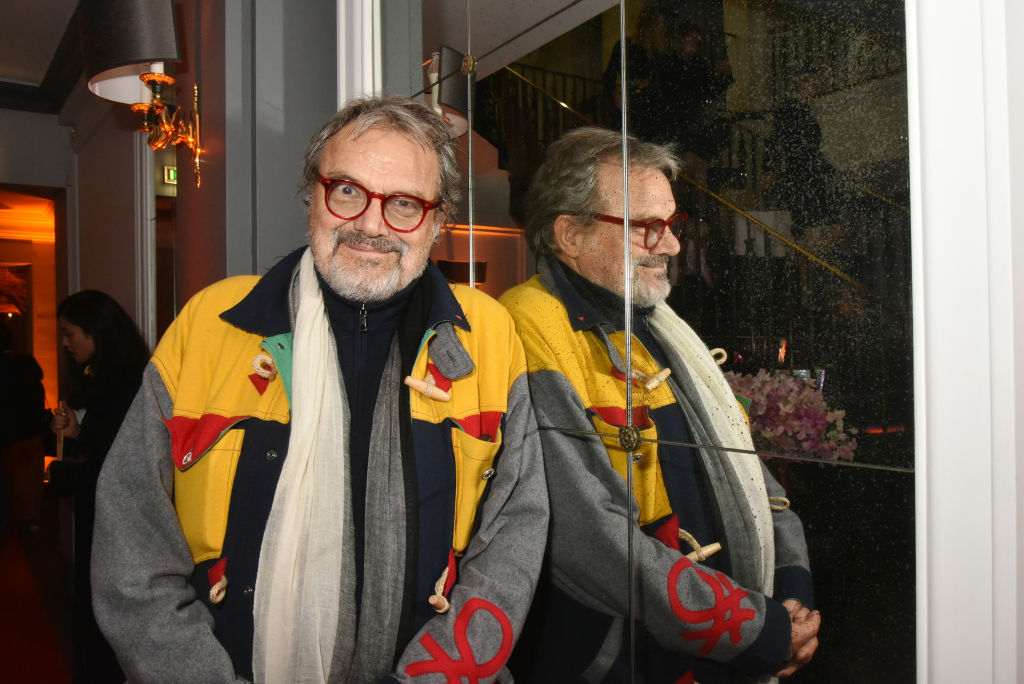 Remembering Oliviero Toscani, fashion photographer and author of provocative Benetton campaigns
Remembering Oliviero Toscani, fashion photographer and author of provocative Benetton campaignsBest known for the controversial adverts he shot for the Italian fashion brand, former art director Oliviero Toscani has died, aged 82
-
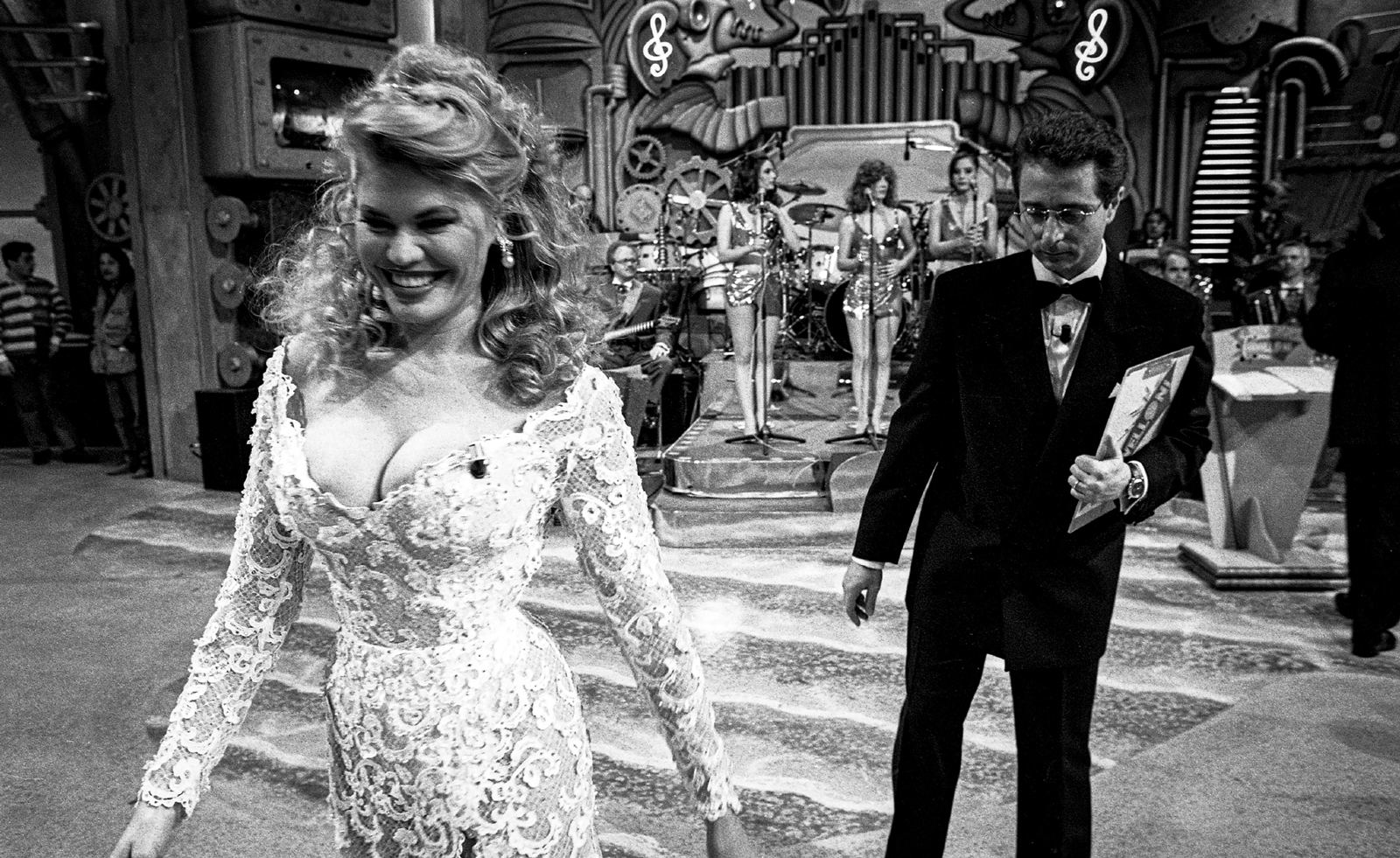 Distracting decadence: how Silvio Berlusconi’s legacy shaped Italian TV
Distracting decadence: how Silvio Berlusconi’s legacy shaped Italian TVStefano De Luigi's monograph Televisiva examines how Berlusconi’s empire reshaped Italian TV, and subsequently infiltrated the premiership
-
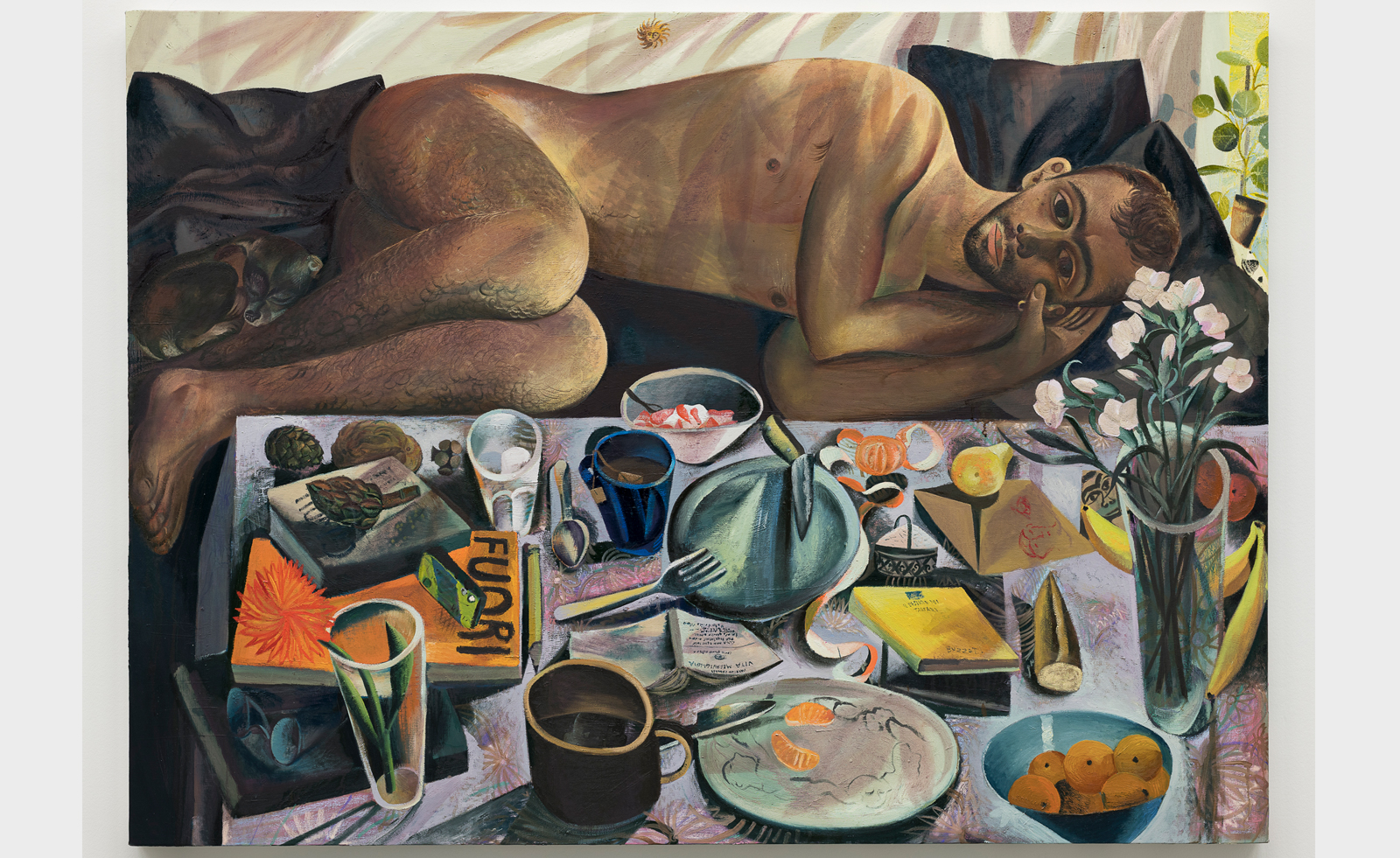 Louis Fratino leans into queer cultural history in Italy
Louis Fratino leans into queer cultural history in ItalyLouis Fratino’s 'Satura', on view at the Centro Pecci in Italy, engages with queer history, Italian landscapes and the body itself
-
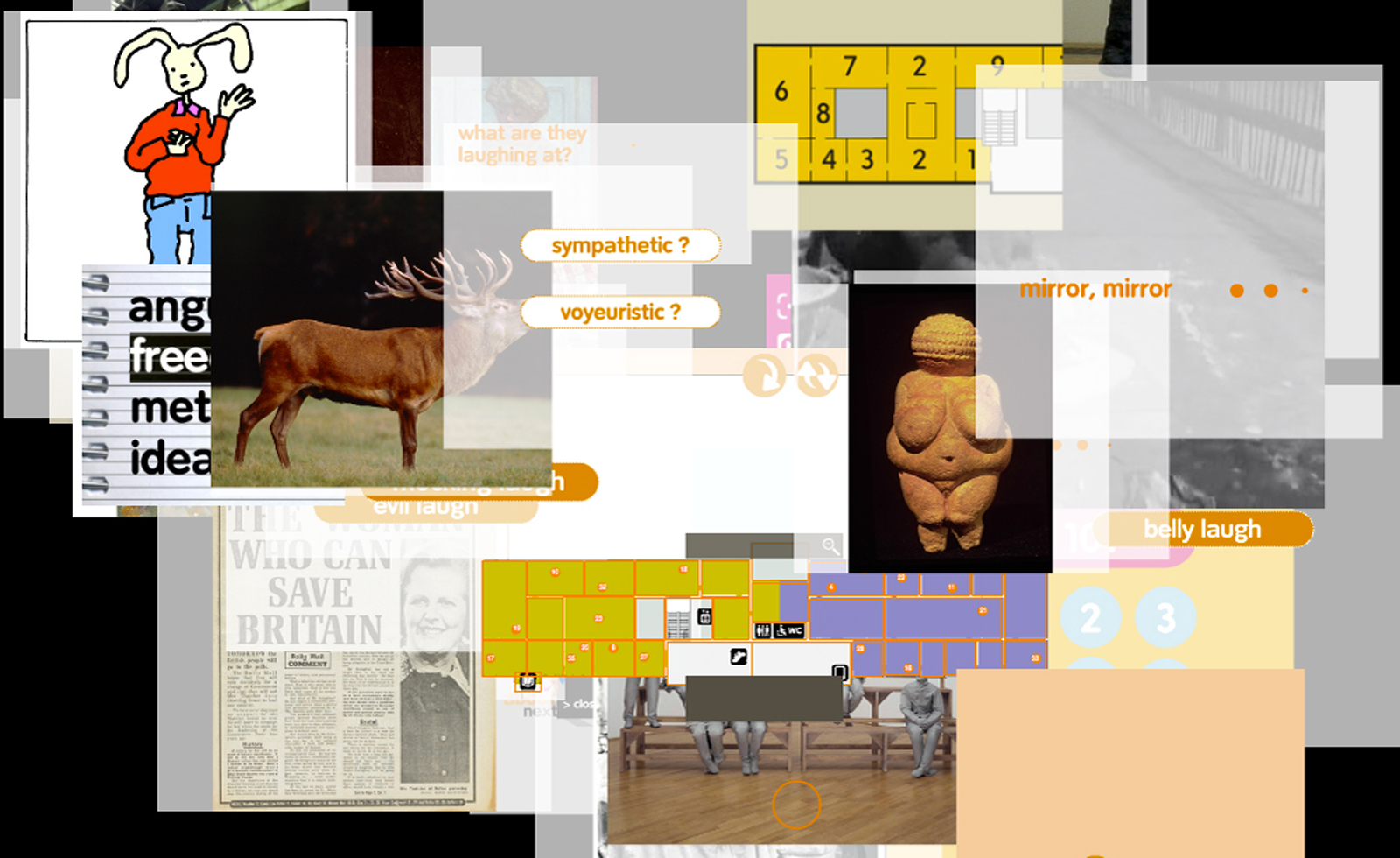 ‘I just don't like eggs!’: Andrea Fraser unpacks the art market
‘I just don't like eggs!’: Andrea Fraser unpacks the art marketArtist Andrea Fraser’s retrospective ‘I just don't like eggs!’ at Fondazione Antonio dalle Nogare, Italy, explores what really makes the art market tick